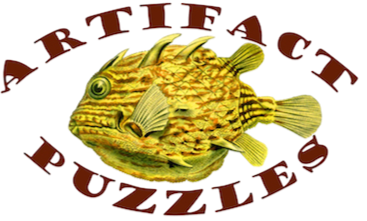Name:
Isabelle
Rating:
Review:
Susan Kaput (see her review below), I follow your advice and started with the little green circle. Since it's the only thing with this exact color, that was an easy one. Okay, but then what?! Oh, there is also a little ochre circle, how satisfying! The rest takes a lot of time and patience, so you get more bang for your buck. I tend to rely heavily on the original image to do a puzzle, and here it is not really possible: it's difficult to orient yourself in the painting. It's a beautiful patchwork of gorgeous colors, and due to its abstract nature you have to enter into the painting and anticipate the direction of the lines (curved vs straight, what kind of angles, etc.) and take note of the territories of colors: black at the bottom (which beautifully gives a sense of gravity to the composition), red is a stripe in the middle, etc. Bicolored, (or even better: tricolored!) pieces are the ones around which you can build up, because they are at the junction of color territories. Yes, some pieces act like universal donors and fit everywhere, and there is some back and forth, and you sigh, and you are back on track, and it feels immensely good. Frustration will be overcome. Wendy (see review below) is right: the border has some pieces that "sit next to each other", and then the inside pieces will attach them together. I see it as an image of how people interact at parties: the ones sitting in the corner, shy and uncomfortable, need the social glue to be part of the whole. The shape of the pieces is very interesting to work with. First, it's "What the heck?!", and soon enough I started to anthropomorphize them, and saw heads, arms and legs. Like a Rorschach test, you probably could see anything in these Escher-ian pieces and that's a good stimuli to the imagination.





